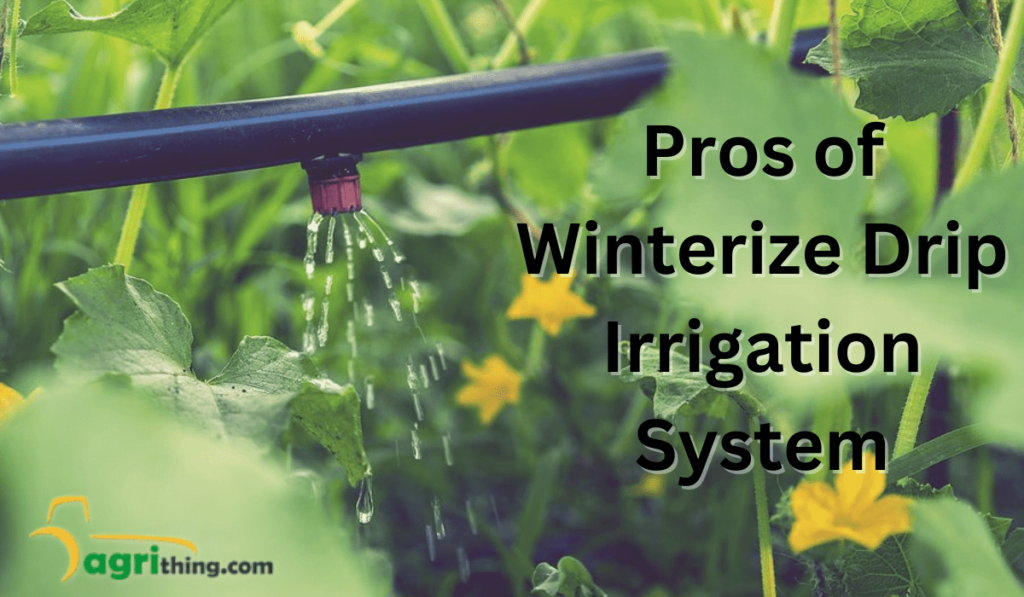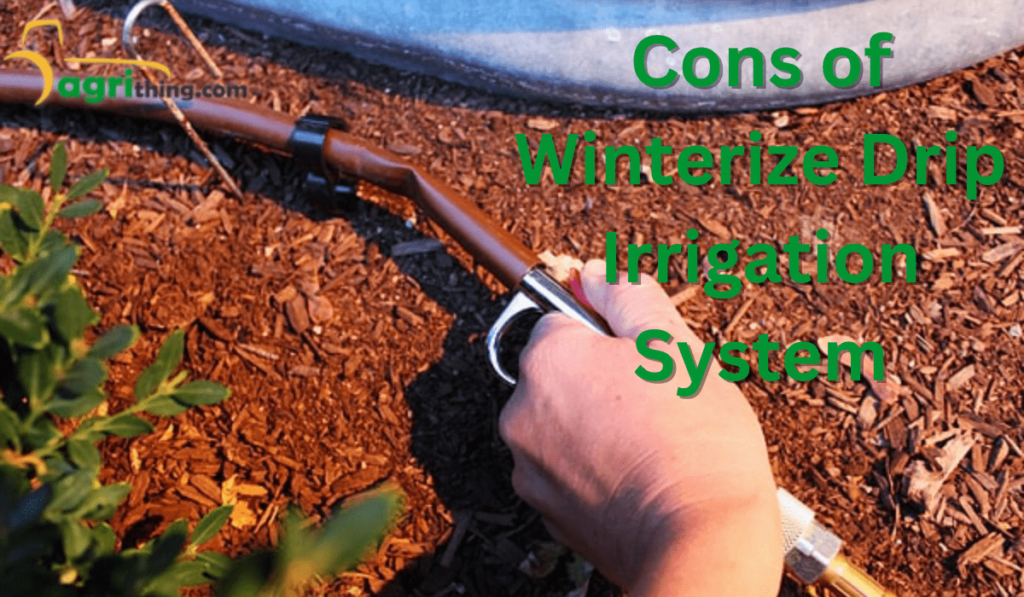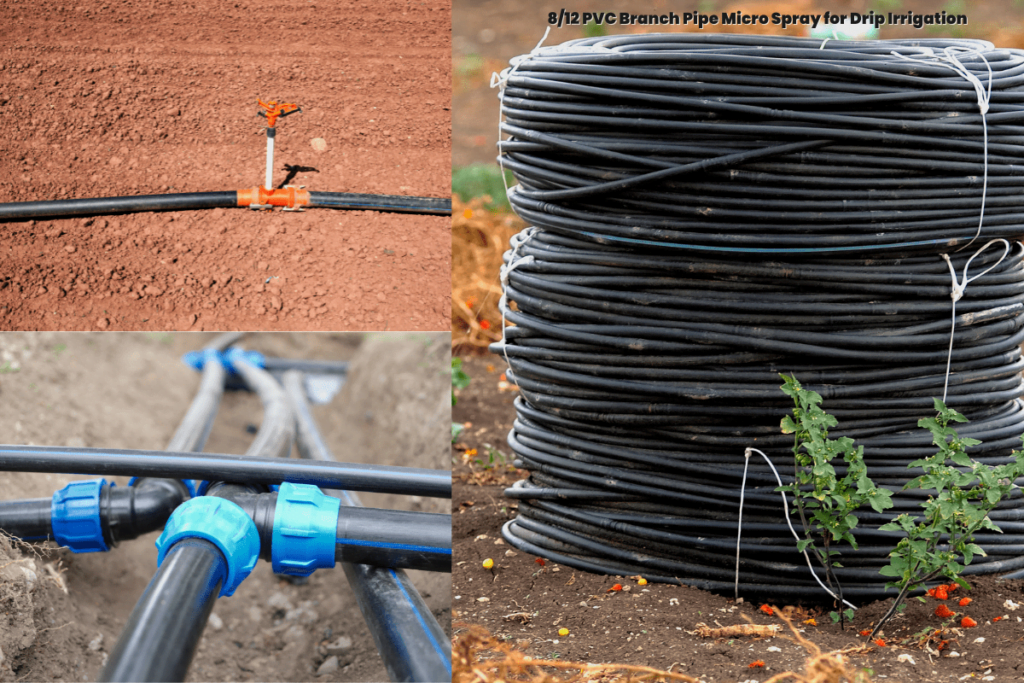Boost Your Garden: Master Winterize Drip Irrigation
Winter can be tough on your winterize drip irrigation system if you don’t get it ready for the cold weather. When it freezes, the pipes can burst and ruin your system. This means you’ll have to spend a lot of money to fix it in the spring. To prevent these problems and make sure your irrigation system lasts a long time, it’s really important to prepare it for winter before the first frost comes. In this article, we’ll explain the step-by-step process of getting your winterize drip irrigation system. By doing this, you can protect your investment and be prepared for the next growing season.
Table of Contents
Drip Irrigation Introduction
Drip irrigation is a smart way to water plants by providing them with water directly at their roots. It saves water, prevents weed growth, and promotes plant health. However, during winter, the freezing cold can pose a threat to various components of the system, such as pipes, valves, and emitters. That’s why it’s crucial to prepare your winterize drip irrigation system for winter. This process, known as winterizing, is essential for safeguarding the system from damage and ensuring its optimal performance when spring arrives.
Turn off the Water Supply in winterize drip irrigation
To prepare your winterize drip irrigation system for winter, follow these steps:
- Locate the main water valve that supplies water to your irrigation system and turn it off. This will halt the flow of water through the system and minimize the risk of freezing.
- After closing the valve, open all the faucets and low points in the system. This will facilitate the draining of any remaining water, preventing it from freezing and causing potential damage.
Clear the Lines of drip irrigation system winterize
To prevent damage caused by freezing water in the lines, it is necessary to remove any remaining water. A highly effective method is to utilize compressed air.
Connect an air compressor to the mainline or the point of connection and gradually increase the pressure to expel the water through the open taps. It is crucial to adhere to the manufacturer’s instructions regarding air pressure to avoid any harm to the system.
Furthermore, you can enhance the protection of your drip system by installing a drain valve at the lowest point. By opening the drain valve, you can ensure the complete removal of any remaining water from the lines. This guarantees that your system is entirely free from water, significantly reducing the risk of freezing and potential damage.
Remove and Store Emitters of drip irrigation
Remove all the emitters from your winterize drip irrigation system. These small devices are susceptible to damage in freezing temperatures. Clean the emitters by soaking them in warm water and delicately scrubbing off any dirt or debris. Once cleaned, ensure they are thoroughly dry and store them in a sealed container or a plastic bag to protect them from dust and moisture. Remember to label them for easy identification when reinstalling them in the spring.
Pros and Cons of Winterize Drip Irrigation System


| Pros | Cons |
|---|---|
| Protects the system from freezing and damage during winter | Requires time and effort to complete the winterization process. |
| Prevents water waste by draining the system | It may require purchasing additional materials or equipment for winterization |
| Extends the lifespan of the system components | May require professional assistance for complex systems or larger setups |
| Reduces the risk of leaks and water damage due to freezing | May need to flush the system, which uses water |
| Saves money on repairs and replacements. | May need to remove or store certain system components temporarily |
| Ensures a smooth start-up and operation in the following spring | It may disrupt the watering schedule during the winter season |
| Protects plants and vegetation from cold and frost damage | It may not be necessary for regions with mild or no freezing temperatures |
Protect the Valves of the irrigation system
Protecting the valves in your winterize drip irrigation system from freezing is of utmost importance. Start by insulating the valve boxes using foam insulation. This will help maintain a stable temperature and prevent freezing. Next, wrap the valves themselves with insulation tape or foam pipe insulation. This additional layer of protection safeguards the valves from freezing and the potential risk of cracking.
Insulate the Pipes
To prevent freezing and mitigate potential damage in your winterize drip irrigation system, follow these steps:
- Apply pipe insulation sleeves to all exposed pipes. Make sure to cover the mainline, lateral lines, and distribution lines. This insulation helps maintain the temperature and prevents freezing.
- Consider using heat cables specifically designed for irrigation systems. These cables provide a consistent heat source to prevent freezing, especially in extremely cold temperatures.
- You can find insulation sleeves and heat cables at hardware stores. They are readily available and accessible.
- Installation of insulation sleeves and heat cables is relatively simple and can be done with ease.
By following these steps, you can provide an extra layer of protection to your winterize drip irrigation system and safeguard it from freezing and potential damage.
Cover the System
Protect your winterize drip irrigation system during winter by adding a layer of cover. Use organic mulch or straw to wrap the pipes and valves that are exposed. These natural materials help keep the system warm and prevent freezing. You can also create a protective enclosure around the system using plastic or plywood. This enclosure offers more insulation and shields the system from bad weather.
Regular Maintenance During Winter
Even though you’ve taken the necessary steps to winterize your winterize drip irrigation system, it’s important to perform regular maintenance throughout the winter months. Periodically inspect the system for any signs of damage or leaks.
Remove any snow or waste that may get on top of the cover or section. This aggressive approach secures that your system remains in good condition and helps you identify and address any issues before they escalate.
Spring Startup
| Steps | Benefits |
|---|---|
| Reconnect the emitters and valves that were removed and stored during winterize | Restores the functionality of the system. |
| Ensure all connections are secure and check for leaks | Allows an efficient water delivery to plants Prevents water wastage and potential damage to the system |
| Flush the system thoroughly to remove debris and sediment that may have accumulated during winterize | Promotes efficient water flow and prevents potential |
Conclusion
Winterizing your drip irrigation system is a crucial step in maintaining its longevity and optimal performance. By following the steps outlined in this article, you can protect your system from freezing temperatures, prevent damage, and be prepared for the next growing season. Remember to turn off the water supply, clear the lines, remove and store emitters, protect the valves, insulate the pipes, cover the system, perform regular maintenance, and conduct a thorough spring startup. By taking these measures, you’ll ensure that your winterize drip irrigation system continues to deliver water efficiently and effectively.
Upgrade Your Irrigation System with 8/12 PVC Branch Pipes Today!
Drip irrigation system

Frequently Asked Questions (FAQ’s)
Can I use antifreeze in my drip irrigation system?
No, it is not recommended to use antifreeze in your drip irrigation system. Antifreeze can be harmful to plants and the environment. It’s best to follow the winterization steps outlined in this article to protect your system.
How often should I check my system during winter?
It’s a good practice to check your system at least once a month during winter. This allows you to identify any issues early on and take necessary actions to prevent damage.
Can I winterize my drip irrigation system myself, or should I hire a professional?
Winterizing your drip irrigation system can be done yourself, especially if you’re familiar with the components and steps involved. However, if you’re unsure or don’t have experience, it’s recommended to hire a professional to ensure proper winterization.
What if I live in a region with mild winters? Do I still need to winterize my system?
Even in regions with mild winters, it’s still a good idea to winterize your system. Sudden drops in temperature or unexpected frost can occur, which can damage your system. It’s better to be safe and protect your investment.
Is it necessary to remove all the water from the system during winterization?
Yes, it’s important to remove as much water as possible from the system during winterization to prevent freezing. Any remaining water can expand when frozen and cause pipes to burst. Properly clearing the lines and using compressed air are effective methods to remove water.
Related Articles
People Also Asked
How often should I winterize my drip irrigation system?
You should winterize your drip irrigation system once a year before the winter season begins
What are the steps to winterize a micro irrigation system?
To winterize your drip irrigation system, follow these steps:
a. Turn off the water supply to the system.
b. Open all the valves and allow the water to drain from the system.
c. Disconnect the drip tubing and remove any filters or pressure regulators.
d. Store the disconnected components in a dry place.
Can I use my drip irrigation system during winter?
It is generally not recommended to use a micro irrigation system during winter, as freezing temperatures can damage the system and its components.
Do I need to drain the water from my drip irrigation system before winter?
Yes, it is important to drain the water from your drop irrigation system before winter. This helps prevent freezing and damage to the system.
Should I remove the drip emitters during winter?
It is a good idea to remove the drip emitters from your system during winter. This ensures that water doesn’t remain trapped in the emitters, which can freeze and cause damage.




